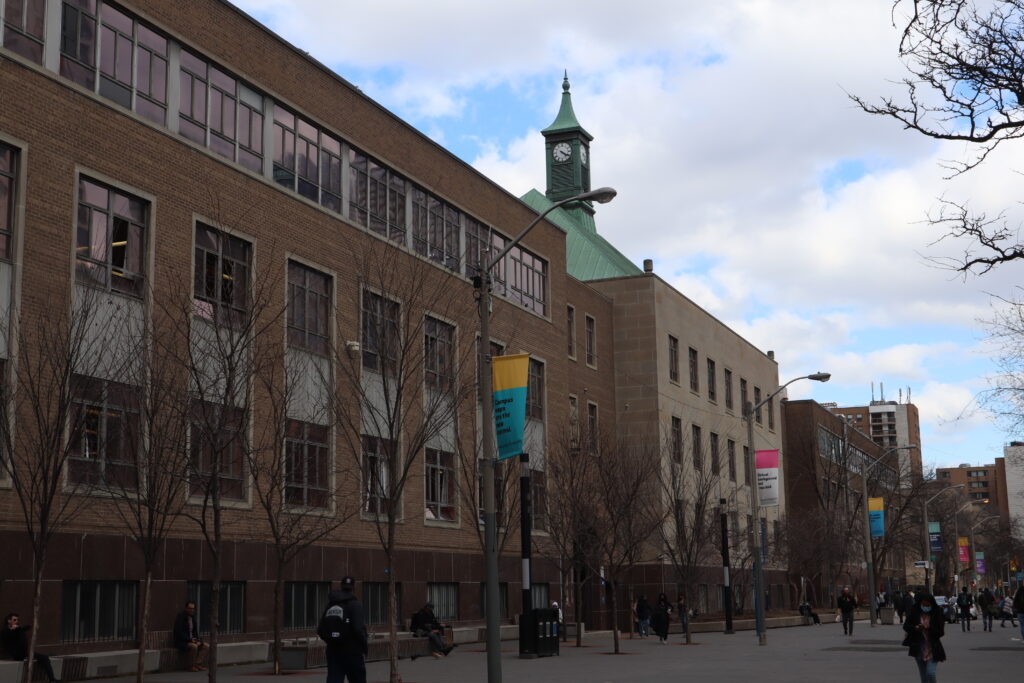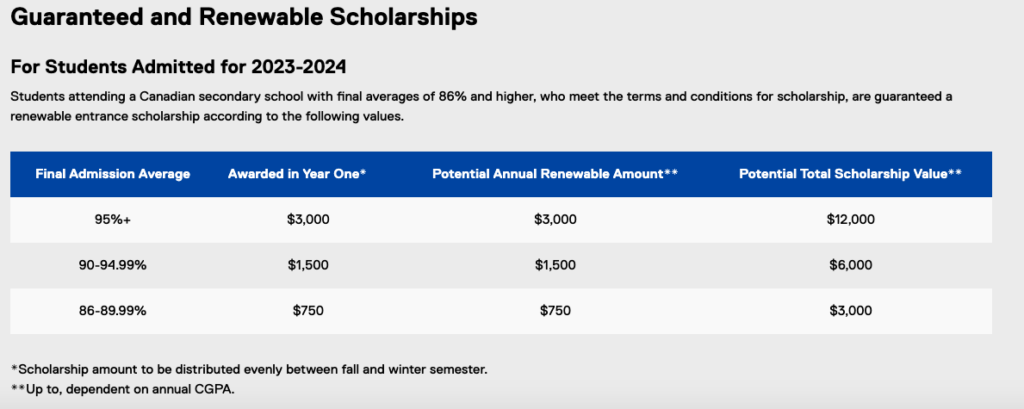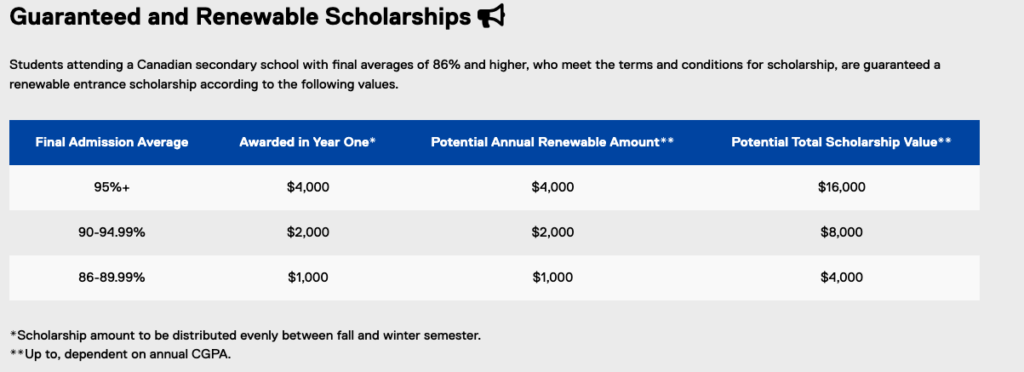
Listen to the story here:
TMU has cut its entrance scholarship amounts for students admitted in the 2023-24 academic year, despite increasing its entrance scholarship budget.
Newly admitted students who are eligible for an entrance scholarship will get between $250-$1,000 less for the 2023-24 year when compared to last year. The highest entrance scholarship, valued at $3,000 for students with a 95 per cent or higher average, had a value of $4,000 last academic year.
For students with a 90-94 per cent average, this value went down from $2,000 to $1,500, and from $1,000 to $750 for students with an average of 86-89 per cent. This equates to a 25 per cent cut in scholarship values, which are separated into three tiers based on grade average.


In its statement, Student Financial Services said that scholarship programs are reviewed at the end of each academic cycle and changed “when necessary” and that entrance scholarship information is shared with prospective students during the fall, before applications open.
“This information is accessible on websites, through in-school outreach with our Student Recruitment team, and is listed in publications and shared at on-campus events,” said financial services.
Gayathri Senthilcheluan is a first-year student who received an entrance scholarship for the 2022-23 year. She also received Ontario Student Assistance Program (OSAP) funding and says that an entrance scholarship helped fund her education.
“For me, even with the entrance scholarship, there’s still a lot that I have to pay, and OSAP doesn’t cover a lot of that,” said Senthilcheluan, who studies biomedical engineering.
Though individual scholarship amounts are dropping, the total amount that TMU is pledging for entrance scholarships is actually going up. They have allocated $10 million, which is an increase of $3 million from the 2021-22 academic year. Financial services attributed the funding increase to a growing list of students qualifying for grade-based scholarships than in previous years.
“Any adjustments made are done so that the university can continue to meet the funding needs of current and future students in a manner that is sustainable, and also predictable so that students know how they will be supported,” according to the statement.
Nathan Sugunalan, the vice-president of education for the Toronto Metropolitan Students’ Union , confirmed via email that the union was not aware of the changes made by financial services. He said the union is in the early stages of assessing an action plan to address the cuts.
Mitra Yakumi, the chairperson for the Canadian Federation of Students-Ontario (CFS Ontario), said students should have been consulted on the changes before they were made.
“When there’s cuts being made, or any changes to postsecondary education at any institution…it’s important for students to be notified and communicated to, and for [the communication] to be as open and accessible as possible,” said Yakumi. “Administrators cannot continue to make decisions without students being at the table.”
“The university’s decision to reduce aid could not come at a worse time,” said David Robinson, the executive director of the Canadian Association of University Teachers. “Students and their families are struggling with rising costs across the board … that leaves students with some potentially difficult choices about whether they take on more debt or defer their studies.”
Yakumi says that students are facing increasing financial pressures across the board, and the next step is for students to mobilize across the province through networks like CFS-Ontario to lobby against financial barriers to education.
“Until the government and institutions make a commitment to increase public funding to postsecondary education through the government and stop using students as cash cows, we’re not going to see education becoming more accessible.”
Reporter, On The Record, Winter 2023

